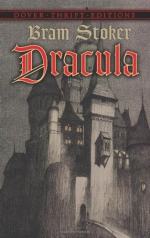In one place part of the stonework of the graves stretches out over the sandy pathway far below. There are walks, with seats beside them, through the churchyard, and people go and sit there all day long looking at the beautiful view and enjoying the breeze.
I shall come and sit here often myself and work. Indeed, I am writing now, with my book on my knee, and listening to the talk of three old men who are sitting beside me. They seem to do nothing all day but sit here and talk.
The harbour lies below me, with, on the far side, one long granite wall stretching out into the sea, with a curve outwards at the end of it, in the middle of which is a lighthouse. A heavy seawall runs along outside of it. On the near side, the seawall makes an elbow crooked inversely, and its end too has a lighthouse. Between the two piers there is a narrow opening into the harbour, which then suddenly widens.
It is nice at high water, but when the tide is out it shoals away to nothing, and there is merely the stream of the Esk, running between banks of sand, with rocks here and there. Outside the harbour on this side there rises for about half a mile a great reef, the sharp of which runs straight out from behind the south lighthouse. At the end of it is a buoy with a bell, which swings in bad weather, and sends in a mournful sound on the wind.
They have a legend here that when a ship is lost bells are heard out at sea. I must ask the old man about this. He is coming this way . . .
He is a funny old man. He must be awfully old, for his face is gnarled and twisted like the bark of a tree. He tells me that he is nearly a hundred, and that he was a sailor in the Greenland fishing fleet when Waterloo was fought. He is, I am afraid, a very sceptical person, for when I asked him about the bells at sea and the White Lady at the abbey he said very brusquely,
“I wouldn’t fash masel’ about them, miss. Them things be all wore out. Mind, I don’t say that they never was, but I do say that they wasn’t in my time. They be all very well for comers and trippers, an’ the like, but not for a nice young lady like you. Them feet-folks from York and Leeds that be always eatin’ cured herrin’s and drinkin’ tea an’ lookin’ out to buy cheap jet would creed aught. I wonder masel’ who’d be bothered tellin’ lies to them, even the newspapers, which is full of fool-talk.”




